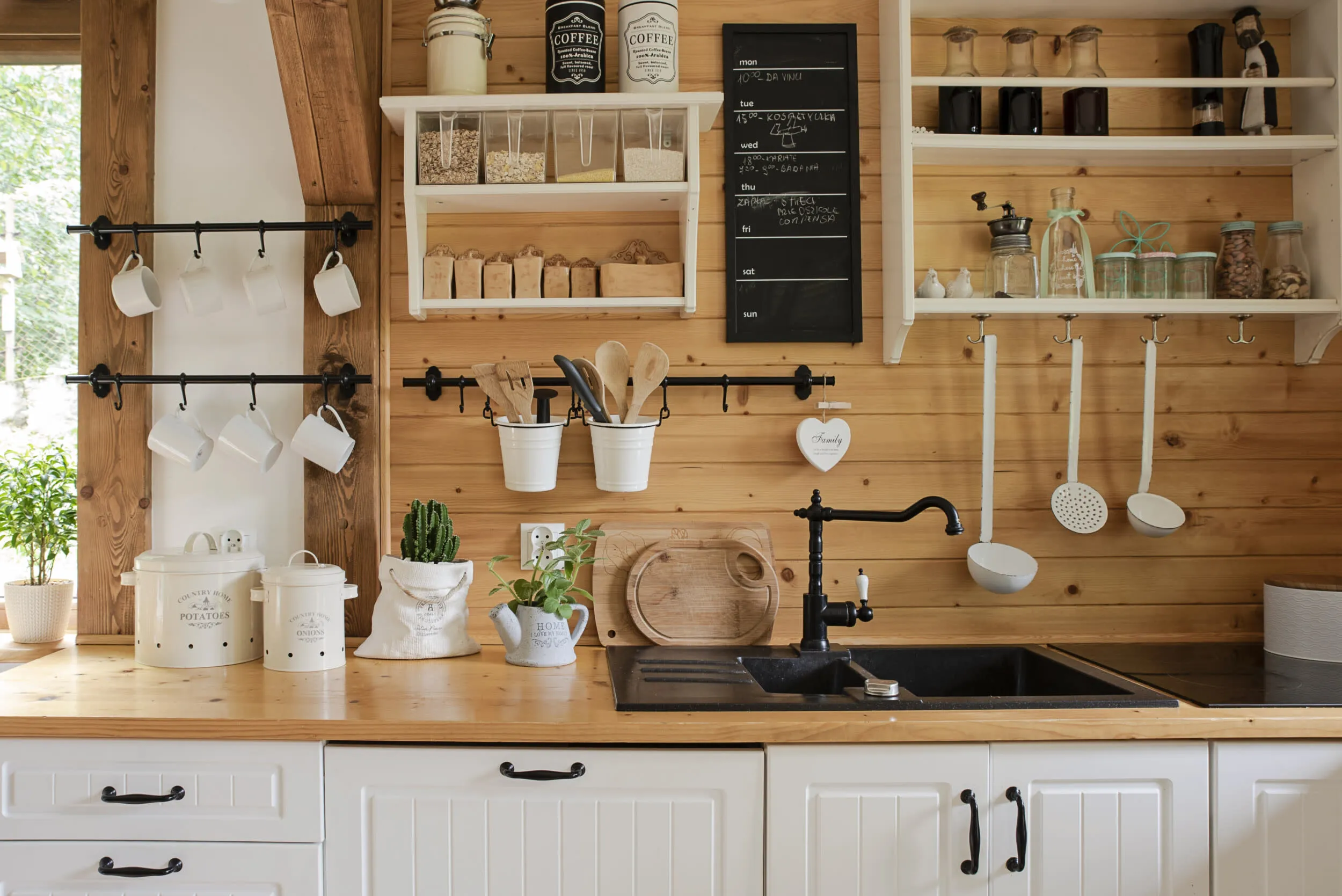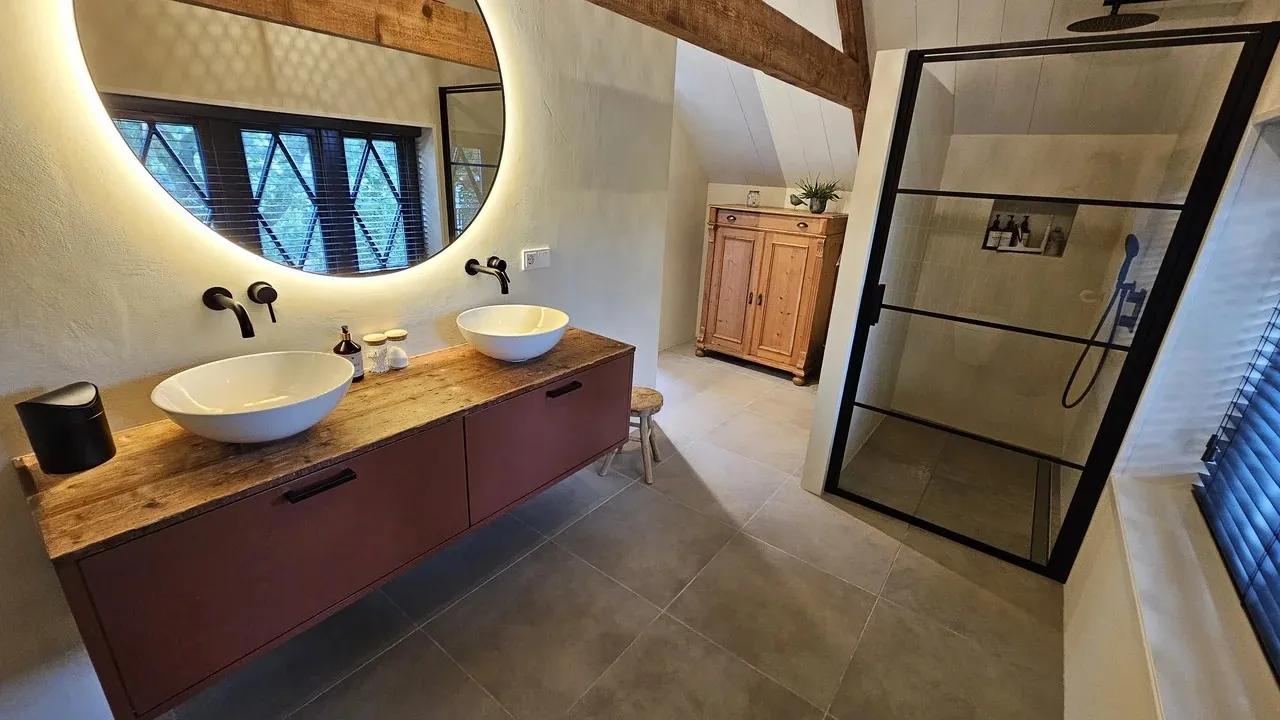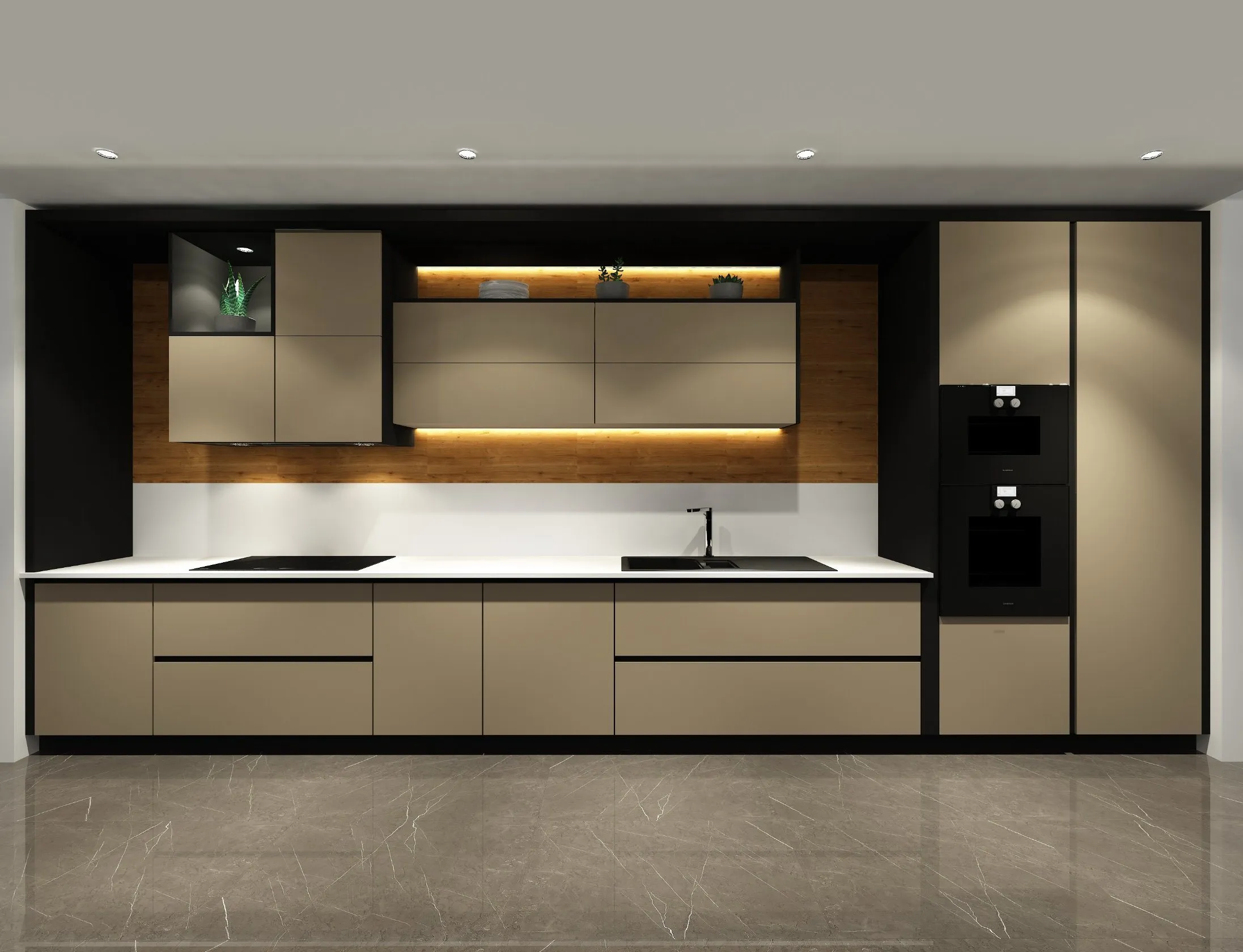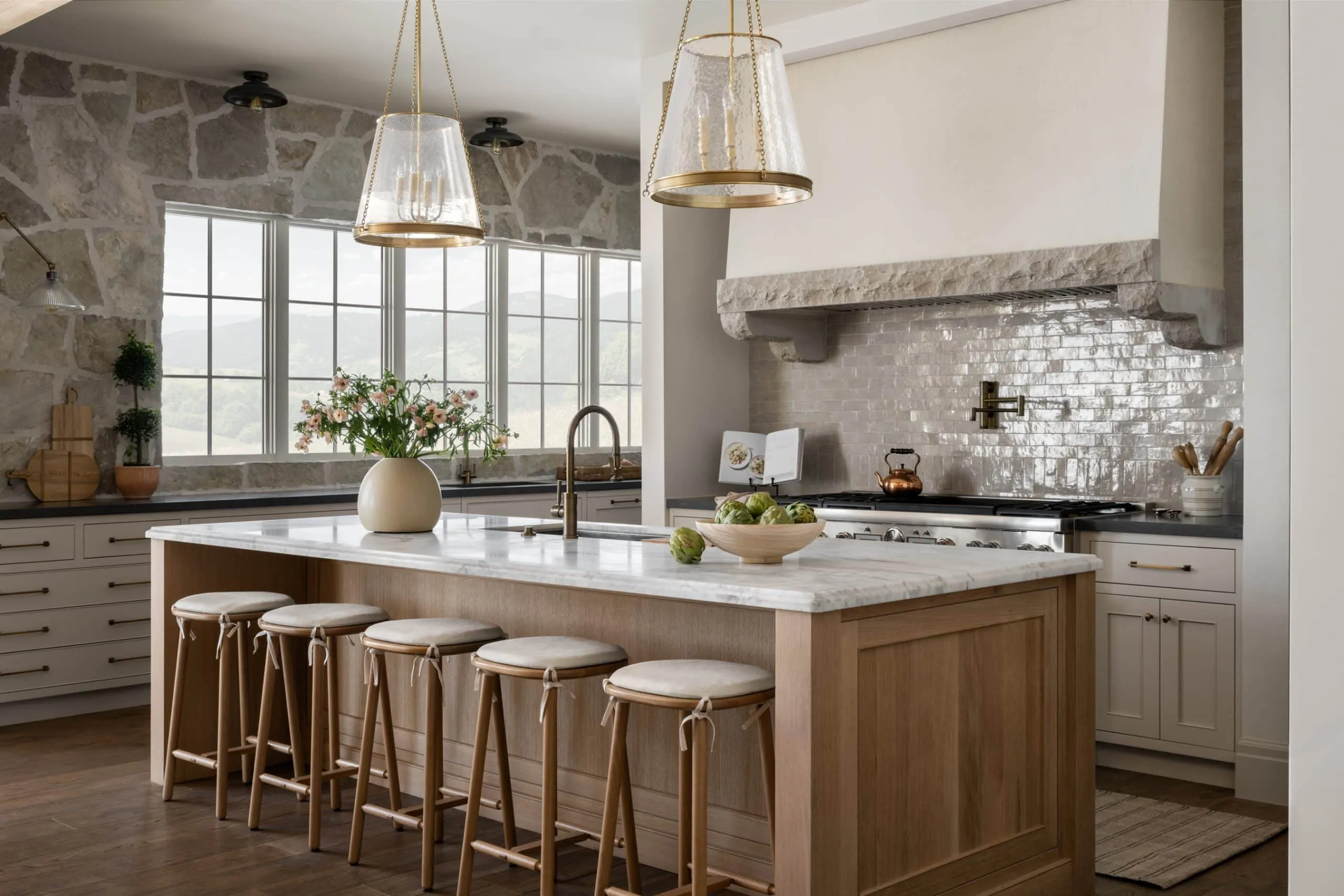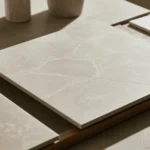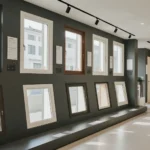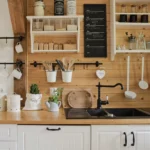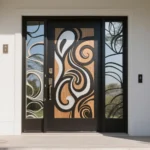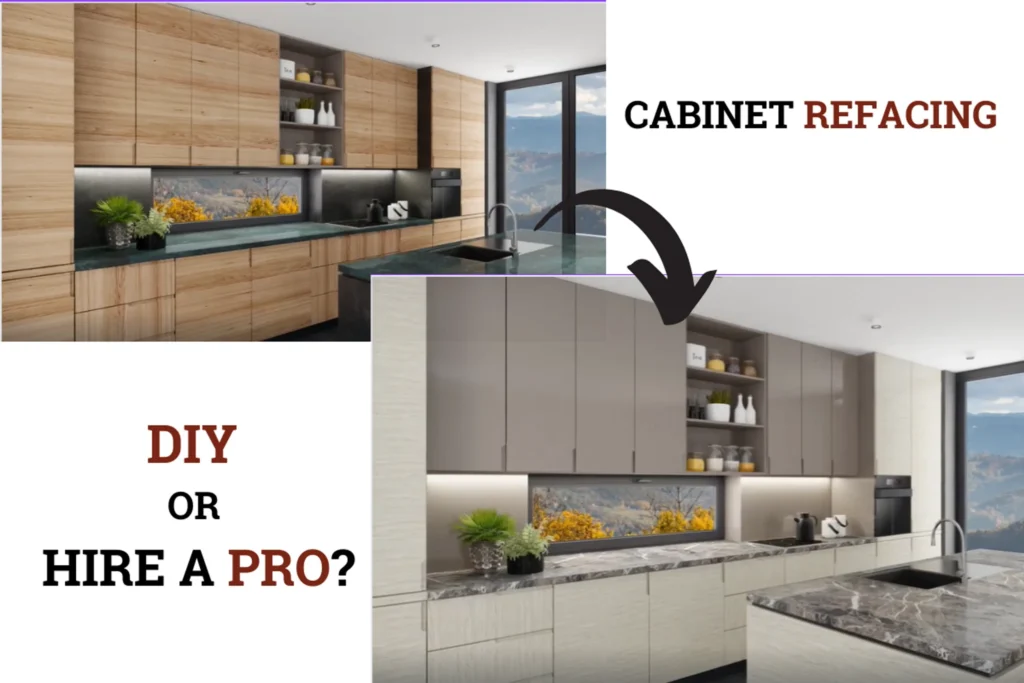
Old cabinets can make your kitchen feel outdated. Painting them yourself may save money, but is it worth the risk when professionals promise flawless results?
We support overseas homeowners, developers, and designers with one-stop building material services. From kitchens, wardrobes, baths, tiles, flooring, doors, lighting, and wall panels, we provide 3D interior and exterior design, whole-house matching, export logistics, and reliable after-sales support. It helps projects of all scales run smoother and faster.
DIY kitchen cabinet painting costs as little as $200–$900. Hiring professionals, however, ranges from $1,500 to $6,000 or more. The choice depends on your budget, skill, time, and the finish you expect.
There is no single answer. For some, DIY feels rewarding. For others, paying for expertise avoids stress. Let’s compare both options in detail.
Is DIY cabinet painting really cheaper?
DIY kitchen cabinet painting is cheaper upfront, often costing under $1,000. Professional painting usually costs several times more due to labor.
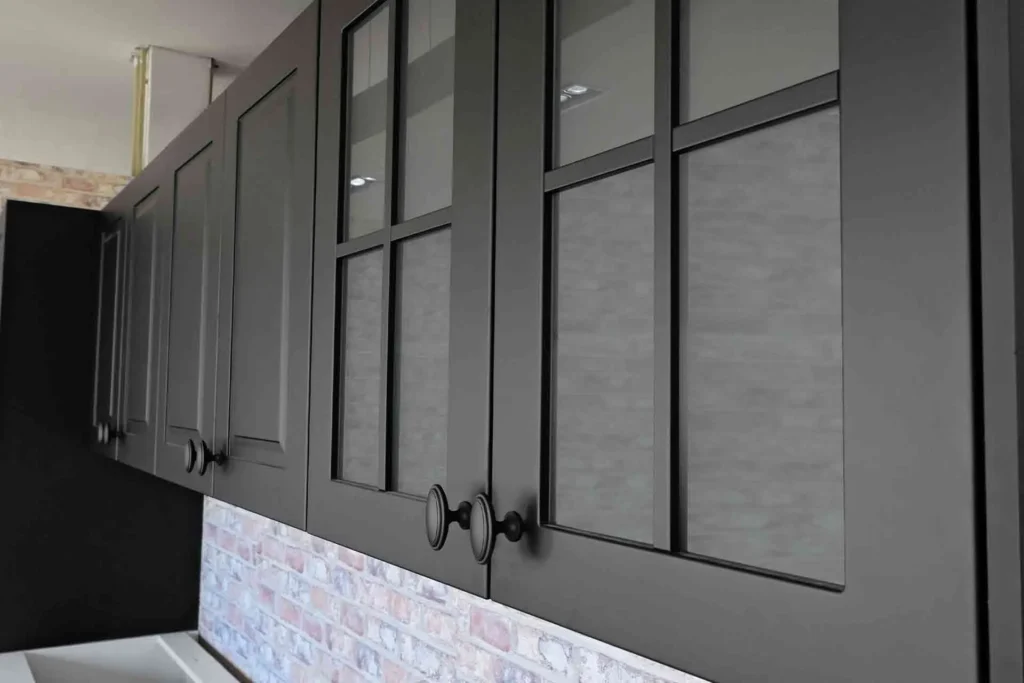
DIY expenses include brushes, rollers, painter’s tape, primer, paint, and protective gear. Renting a paint sprayer may add $50–$100 per day. Mistakes, however, may lead to extra costs for sanding or repainting.
DIY Cost Breakdown
| Item | Estimated Cost |
| Paint & Primer | $100–$250 |
| Brushes, Rollers, Tape | $50–$120 |
| Protective Gear | $30–$60 |
| Paint Sprayer Rental | $50–$100/day |
Professional services bundle all these expenses into labor fees, but the difference in finish can be dramatic. If your cabinets are in poor condition, DIY may end up costing more in corrections.
For more context on total price ranges, see our related article How Much Does Kitchen Cabinet Painting Really Cost?
How long does DIY cabinet painting take?
DIY cabinet painting often takes 3–7 days, depending on kitchen size, prep work, and drying time. Professionals usually complete the job in 2–3 days.
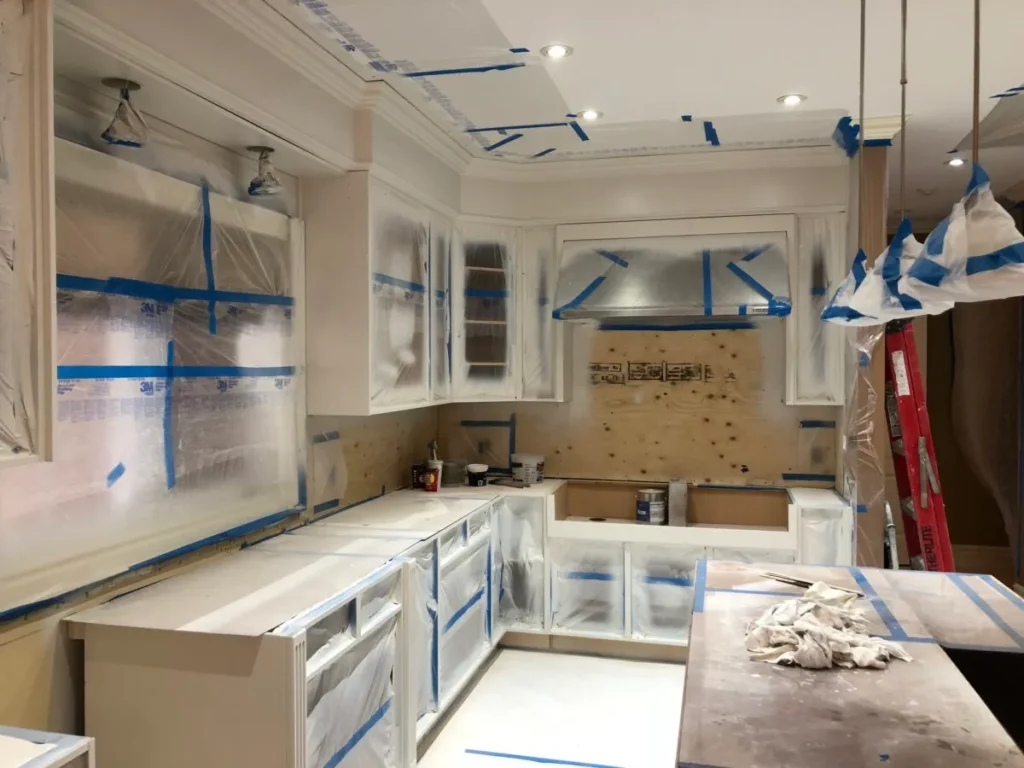
DIY requires multiple steps:
- Remove doors and hardware.
- Clean and degrease surfaces.
- Sand or de-gloss cabinets.
- Apply primer.
- Paint two or more coats.
- Reinstall hardware after drying.
Each stage demands patience. Skipping prep or rushing coats often leads to peeling or uneven finishes. Pros use faster-drying products, advanced sprayers, and teams to speed up the process.
If time is limited or your kitchen is heavily used, professional services may be worth the investment.
What tools and materials are needed for DIY painting?
DIY painting requires brushes, rollers, sprayers, sandpaper, primer, and cabinet-grade paint. Skipping quality tools lowers durability.
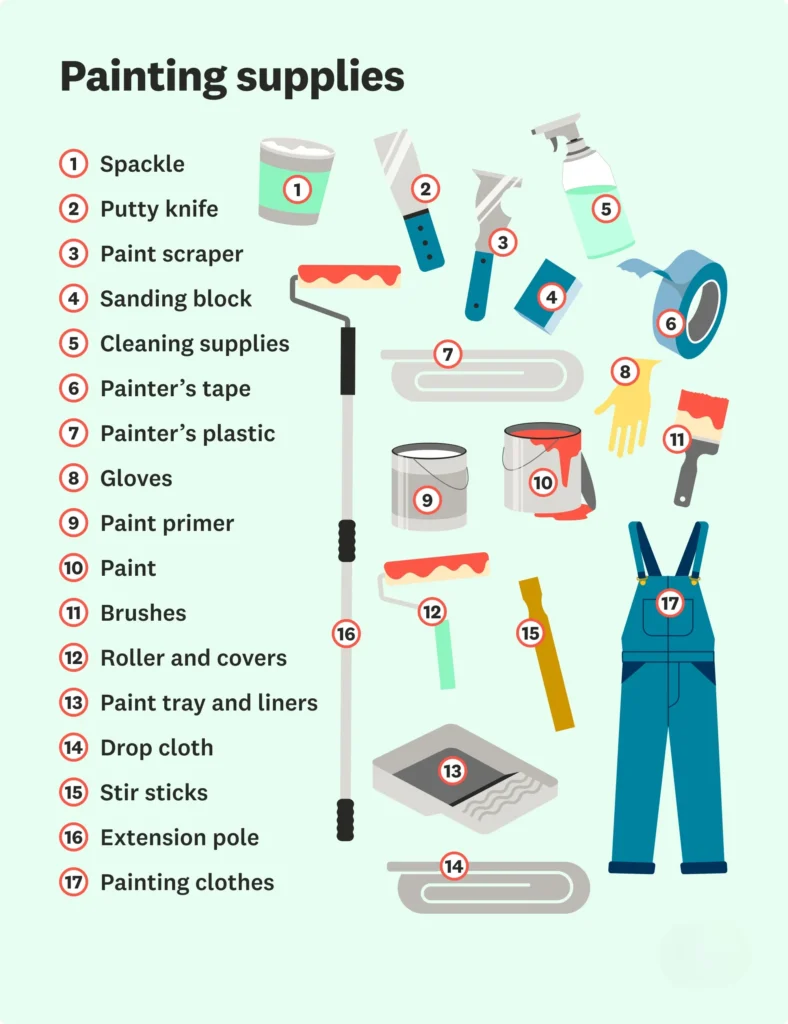
Essential DIY Kit
- Sandpaper or sander for smoothing surfaces.
- Painter’s tape to protect walls and counters.
- Degreaser to clean oily cabinet surfaces.
- Bonding primer to ensure adhesion.
- Cabinet-grade enamel paint for durability.
- Topcoat or polyurethane for protection.
Some materials, such as polyurethane, add durability but require careful application. Without proper tools, applying finishes evenly can be difficult.
DIY is best for smaller kitchens or homeowners with prior painting experience. First-timers may find the process frustrating without guidance. If you are also deciding which colors or finishes are easier for DIY projects, check our article on Kitchen Cabinet Painting Ideas That Actually Work for inspiration.
Why do pros charge more for cabinet painting?
Professionals charge more because they bring skill, speed, and long-lasting results. They use specialized tools and know how to handle different cabinet materials.
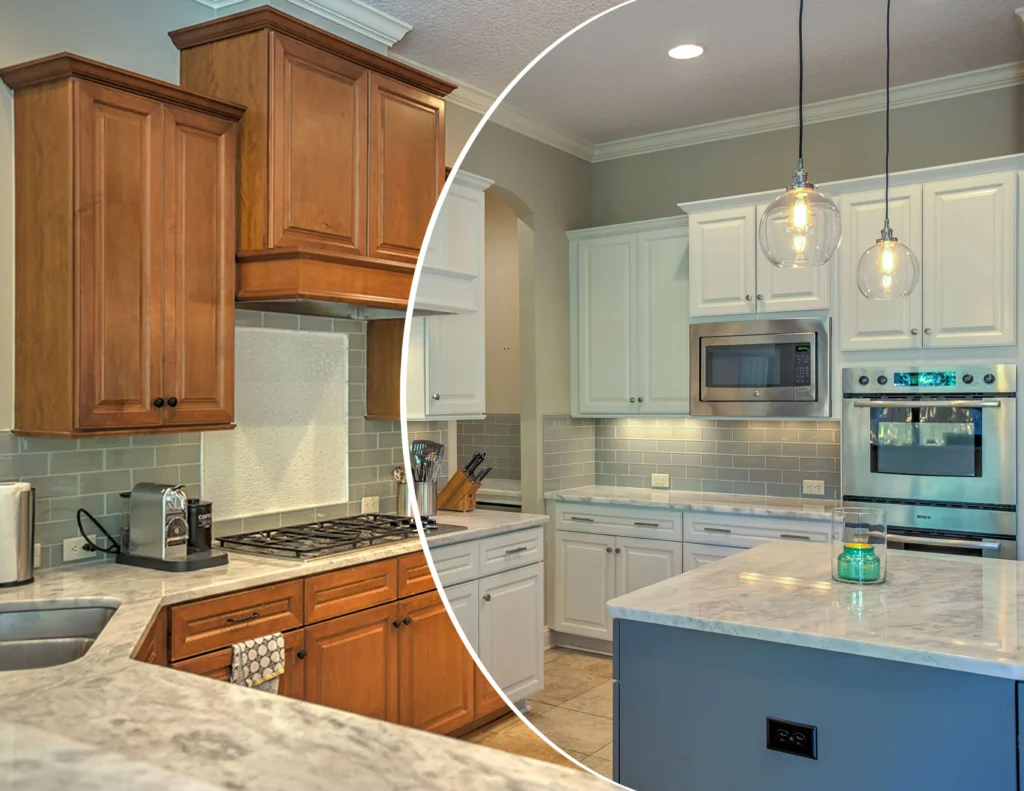
What You Get With Pros
- Prep quality: Pros ensure smooth surfaces by sanding and filling.
- Application methods: Many use sprayers for a flawless factory-like finish.
- Durability: Professional jobs often last 7–10 years.
- Efficiency: Jobs are done in days, not weeks.
Hiring pros also avoids common mistakes like drips, uneven coats, or visible brush marks. They handle cabinets made of wood, MDF, or laminate differently, which improves adhesion and finish quality.
Which option lasts longer: DIY or Pro?
Professional cabinet painting typically lasts longer than DIY because of better prep, higher-grade paints, and expert application.
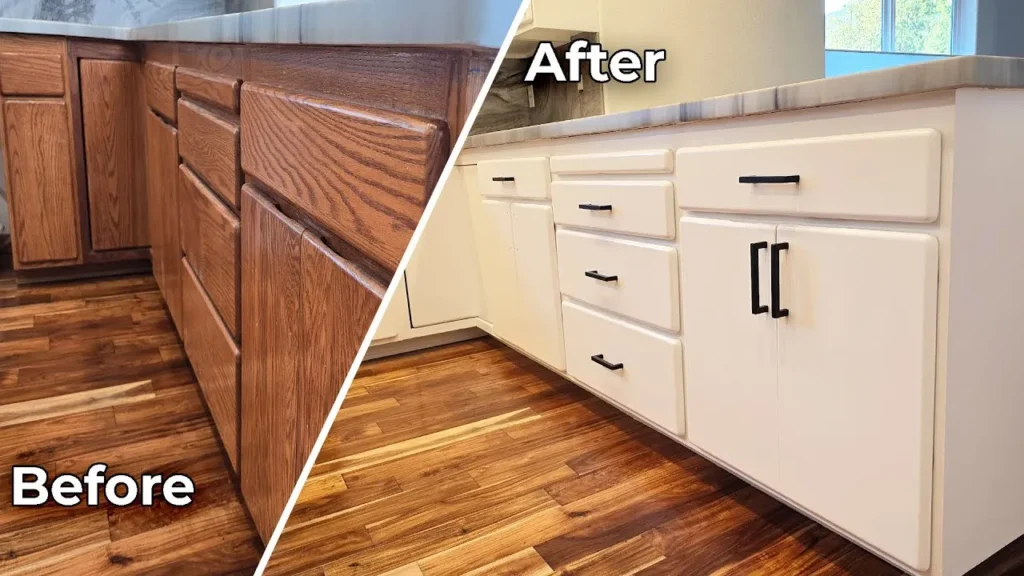
DIY jobs may last 3–5 years if done carefully, while pro finishes can last 7–10 years with proper care. The difference comes from both materials and techniques.
Lifespan Comparison
| Method | Average Lifespan |
| DIY | 3–5 years |
| Professional | 7–10 years |
According to paint durability, lifespan depends on surface prep, paint type, and environment. Kitchens are high-moisture, high-use spaces, so professional coatings often outperform DIY jobs.
For homeowners planning to sell soon, DIY may be enough. For those seeking long-term results, pros deliver greater value.
A Friendly Wrap-Up — And How We Can Help
DIY cabinet painting can be a great save if you have the time and patience; hiring pros costs more but usually brings a smoother, longer-lasting finish. Wherever you land, we’re here to help—share your floor plan and goals, and we’ll suggest materials and finishes, compare costs and timelines, and even sketch a simple layout to get you started. Ready when you are—just send us your plan.
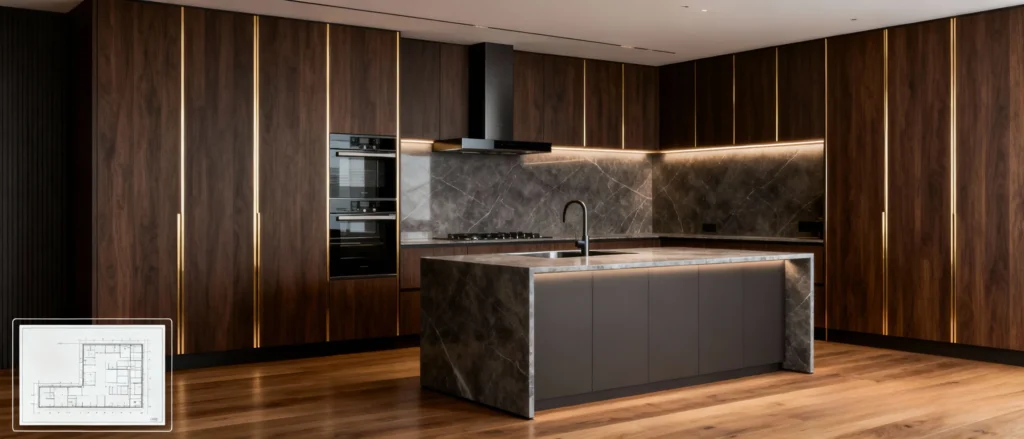
FAQ
Is DIY cabinet painting worth it?
Yes, if you have time and patience. It saves money but may not look as polished as pro work.
How do professionals paint cabinets so smoothly?
They use sprayers, advanced primers, and sanding between coats, which creates a factory-like finish.
What is the biggest mistake in DIY cabinet painting?
Skipping prep or primer is the most common mistake, leading to peeling or uneven coverage.
Can you paint laminate cabinets DIY?
Yes, but you must use a bonding primer for proper adhesion. Without it, paint will peel off quickly.
Do professionals remove cabinet doors before painting?
Almost always. This ensures even coverage and prevents paint buildup around hinges.
Does DIY painting add value to a home?
Yes, but less than pro jobs. Professional finishes appeal more to buyers and often improve resale value.
Which lasts longer, painted or replaced cabinets?
Replacement lasts longer, but at 3–5 times the cost. Painting is a budget-friendly refresh.
How do you maintain painted cabinets?
Clean with mild soap and water, avoid harsh chemicals, and wipe spills quickly to extend paint life.

